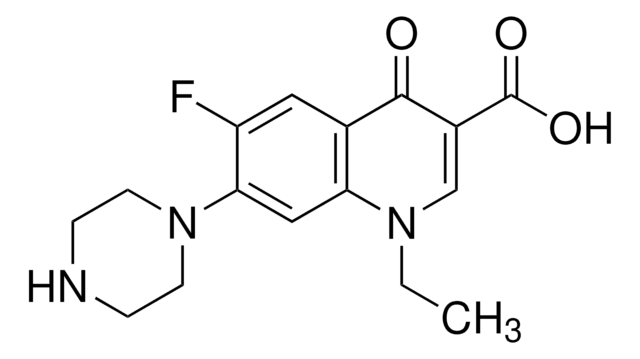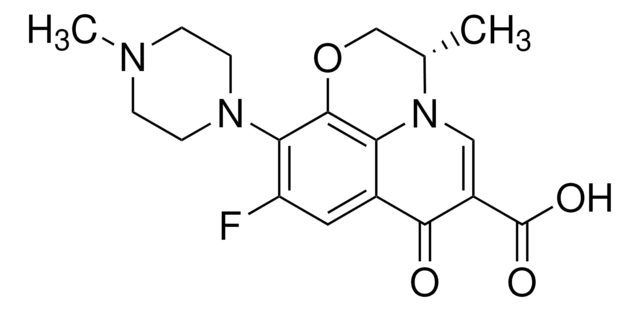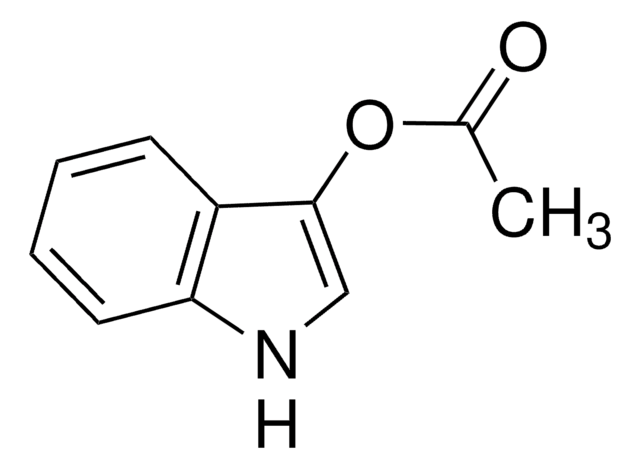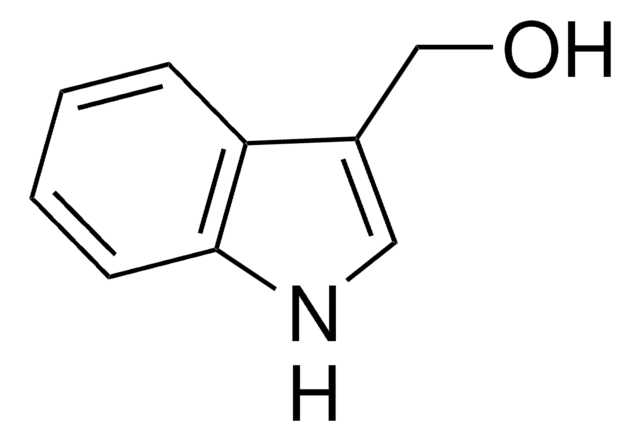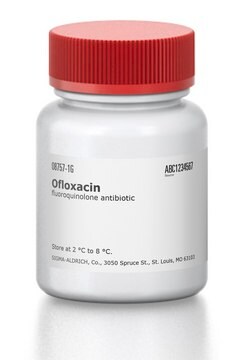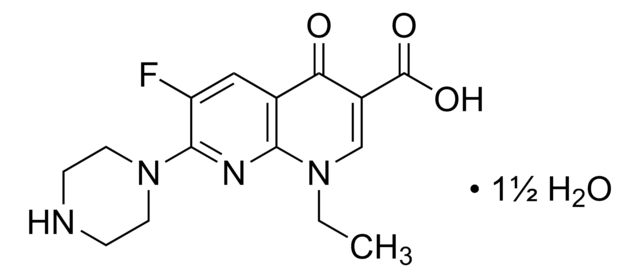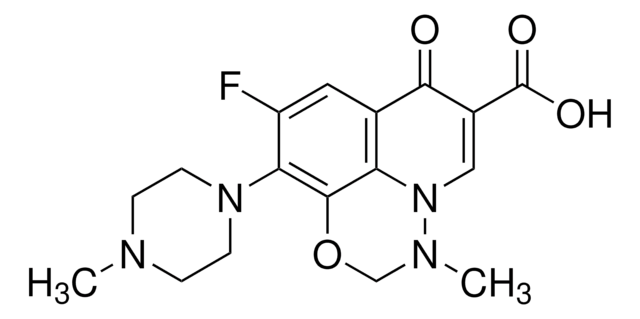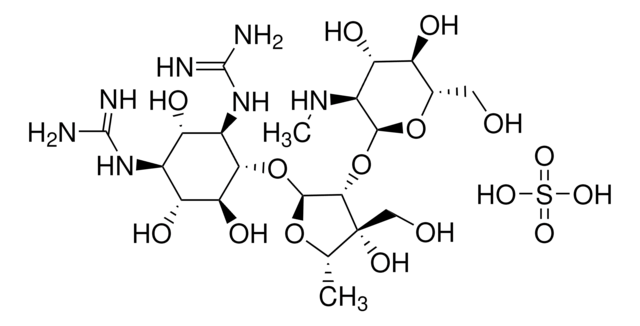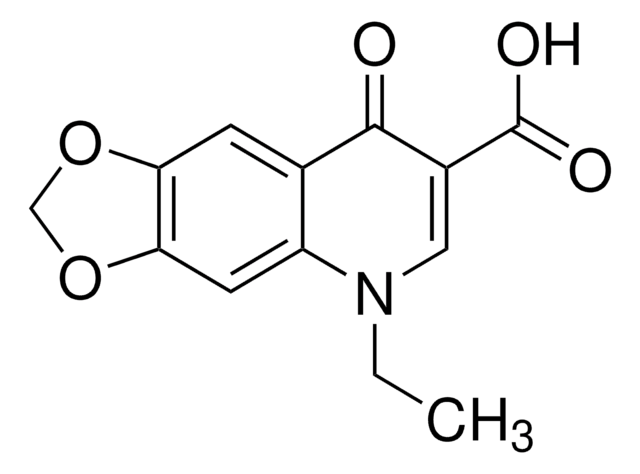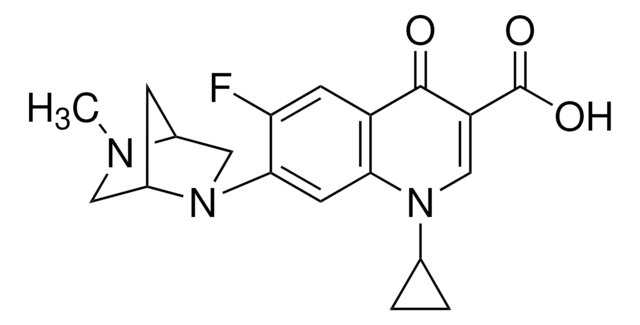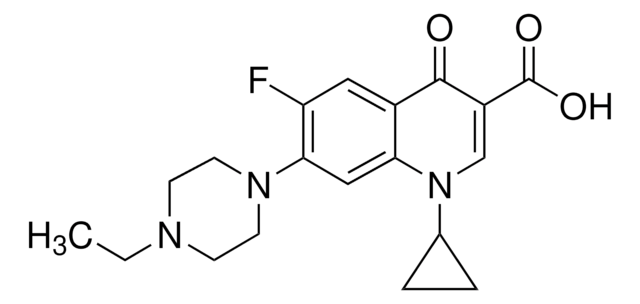L2906
Lomefloxacin hydrochloride
Sinonimo/i:
1-Ethyl-6,8-difluoro-1,4-dihydro-7-(3-methyl-1-piperazinyl)-4-oxo-3-quinolinecarboxylic acid
About This Item
Prodotti consigliati
Origine biologica
synthetic
Colore
white to off-white
Spettro attività antibiotica
Gram-negative bacteria
Gram-positive bacteria
Modalità d’azione
DNA synthesis | interferes
enzyme | inhibits
Temperatura di conservazione
−20°C
Stringa SMILE
Cl.CCN1C=C(C(O)=O)C(=O)c2cc(F)c(N3CCNC(C)C3)c(F)c12
InChI
1S/C17H19F2N3O3.ClH/c1-3-21-8-11(17(24)25)16(23)10-6-12(18)15(13(19)14(10)21)22-5-4-20-9(2)7-22;/h6,8-9,20H,3-5,7H2,1-2H3,(H,24,25);1H
KXEBLAPZMOQCKO-UHFFFAOYSA-N
Descrizione generale
Applicazioni
Azioni biochim/fisiol
Scegli una delle versioni più recenti:
Possiedi già questo prodotto?
I documenti relativi ai prodotti acquistati recentemente sono disponibili nell’Archivio dei documenti.
I clienti hanno visto anche
Il team dei nostri ricercatori vanta grande esperienza in tutte le aree della ricerca quali Life Science, scienza dei materiali, sintesi chimica, cromatografia, discipline analitiche, ecc..
Contatta l'Assistenza Tecnica.